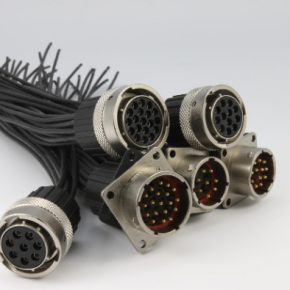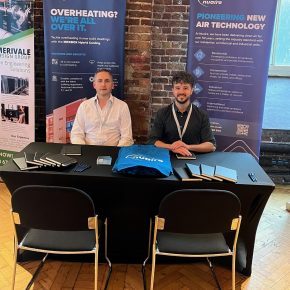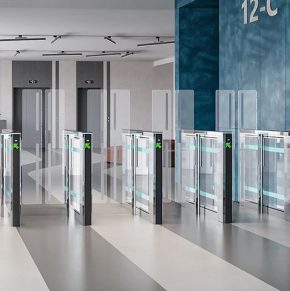
Inline Connectors 101: Choosing the Right Type for Your Electrical Needs
In electrical systems, inline connectors are an essential part. They make it easy, safe, and efficient to create connections and are quite useful in homes, automobiles, industrial machinery, and outdoor connections.
If you are working with any of these and need to use RS inline connectors for whatever reason, it’s important to have a clear idea of how they work and how to choose one. This article breaks down the most important factors you should consider.
What are Inline Connectors?
Inline connectors are electrical components that join two or more (often three) wires in a straight line configuration. Their main purpose is simple – to ensure a continuous and secure flow of electricity.
Unlike most other types of connectors, such as junction boxes or terminal blocks, inline connectors don’t need additional mounting hardware, their job is just to make a continuous connection. While doing this, they are also expected to make the connection secure and protect it against environmental factors like moisture, vibration, and mechanical stress.
Some inline connectors are designed to offer permanent connections, but most of those used in home and outdoor connections make it easy to connect and disconnect appliances.
Factors to Consider When Choosing Inline Connectors
Selecting the right inline connector is crucial as you need to ensure that all your connections are safe, efficient, and long-lasting. This means you’ll need to select the right one depending on the type of connection and various other factors.
Number of Pins (2-Pin vs. 3-Pin Connectors)
The most basic consideration you’ll need to make is the type of connector you want. There are two main ones:
– 2-Pin Connectors: These are most commonly used in building sections that rely on low power, such as LED strip lighting, signages, and some control systems. Typically, these don’t require any grounding.
– 3-Pin Connectors: These are the most common ones in construction as they carry more power and have a grounding pin for safety. They are mostly used in high-power building sections, temporary lighting, and HVAC systems.
Selecting between the two comes down to the type of applications or wiring you have.
Voltage and Current Rating
Simply choosing between a 2-pin and 3-pin connector isn’t enough, as different ones are designed to different voltage and current levels. If you exceed the ratings by using a lower-rated one on higher-rated connections, you risk overheating, failure, and even fires.
– Voltage Rating: Different connectors are suited to different voltage levels. Low-voltage ones (e.g., 12V–24V) are mostly used in automobiles and LED applications, while high-voltage connectors (e.g., 120V–240V) are the ones common in homes and industrial systems.
– Current Rating: Every connector has its maximum limit, typically measured in amperes (A). If you use one that’s not rated for the required current, this will cause resistance, which will then lead to overheating and potential failure.
Ensure that you have the voltage and current ratings of your connection before buying a connector.
Wire Gauge and Cable Diameter Compatibility
You’ll need to consider the wire gauge and cable diameter to ensure that the connection is secure and efficient.
– Cable Diameter: This is the total thickness of the cable, including the conductor, insulation, and any shielding. You’ll need anything between 9mm and 16mm, and ensuring yours fits means you’ll have a stronger and safer connection.
– Wire Gauge (AWG or mm²): This narrows it down to the thickness of the conductor. A lower AWG means a thicker wire, so more current, and vice versa.
Ensure your connector fits and has the same level of thickness.
Ease of Installation
While most inline connectors are easy to install, there are different types of installation. Some require crimping tools, and others need soldering. This means that these connectors will require you to have the right tools and expertise.
However, most connectors you’ll need for homes and outdoor installations are simple plug-and-play connections that don’t need any special tools. They have male and female sides, making them easy to connect and disconnect at will.
When selecting yours, ensure you consider where and how you need to use them. Add this to the electrical specifications and environmental factors, and it will be easy to select the right type of inline connector.
Latest news

17th April 2025
Nuaire shares expertise at Specifi Mechanical Services events in 2025
Indoor air quality and ventilation manufacturing specialist Nuaire is pleased to be exhibiting at the Specifi Mechanical Services events once again in 2025.
Posted in Air Conditioning, Articles, Building Industry Events, Building Industry News, Building Products & Structures, Building Services, Exhibitions and Conferences, Facility Management & Building Services, Heating, Ventilation and Air Conditioning - HVAC, Restoration & Refurbishment, Retrofit & Renovation
15th April 2025
West Fraser: CaberDek earns top marks from Home Counties carpentry specialist
A specialist carpentry sub-contractor covering housing sites across a large swathe of the Home Counties has come to value CaberDek from the West Fraser range for a variety of reasons: not least because the high quality panel product doesn’t destroy his operatives’ electric saws!
Posted in Articles, Building Industry News, Building Products & Structures, Building Systems, Case Studies, Restoration & Refurbishment, Retrofit & Renovation, Roofs, Timber Buildings and Timber Products, Wooden products
15th April 2025
GEZE: The Role of Access Control Systems in Enhancing Building Safety
Jane Elvins, Specification and Business Development Manager at GEZE UK, delves into the role of access control systems in enhancing building safety…
Posted in Access Control & Door Entry Systems, Architectural Ironmongery, Articles, Building Industry News, Building Products & Structures, Building Services, Doors, Facility Management & Building Services, Health & Safety, Restoration & Refurbishment, Retrofit & Renovation, Security and Fire Protection
11th April 2025
Don’t Do a Dave! It’s Time to Lock FIT Show 2025 in Your Calendar!
It’s that time again – FIT Show is back! You could be forgiven for thinking there won’t be much new to see when FIT Show returns to the NEC from 29 April – 1 May. Wrong!
Posted in Articles, Building Industry Events, Building Industry News, Building Products & Structures, Building Services, Continuing Professional Development (CPD's), Exhibitions and Conferences, Information Technology, Innovations & New Products, Restoration & Refurbishment, Retrofit & Renovation, Seminars, Training
 Sign up:
Sign up: